Satyodaya continues his trek in the Sumatran jungle, as Nirbija reports
Satyodaya was very lucky that, already on his first day, he had the chance to photograph several orangutans from up close.
“Orangutans are arboreal, living high up in the rainforest canopy, and have low population densities. In Sumatra, they rarely come to the ground due to the threat of tigers. Each night, they build a new nest. However, these nests blend in with the surrounding trees, making them difficult to spot.” (orangutans-sos.org)
The Gunung Leuser National Park is home to an astonishing variety of species and is of great importance for the protection of biodiversity. It is home to rare species of mammals such as the mighty Sumatran tiger, rhinos, and the highly evolved primate, the orangutan, which is particularly endangered. It is estimated that there are only 14,000 orangutans left in Sumatra.
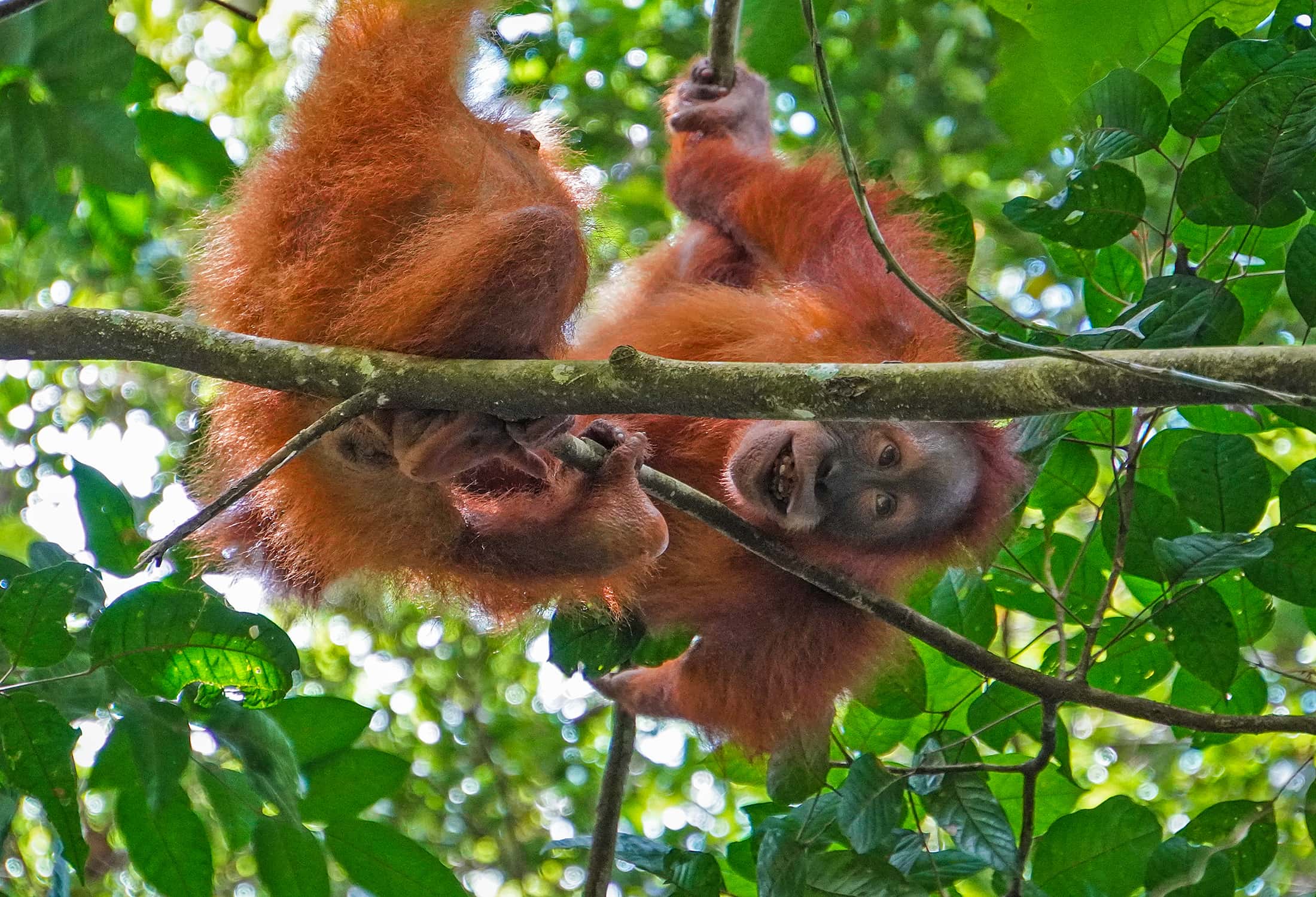
A red-haired orangutan slowly and carefully slides down from above.
Due to their high intelligence, these great apes are classified as primates, as are elephants and some species of ravens. Experiments have shown that primates can build simple tools – for example, shaping a suitably shortened branch into a hook to reach inaccessible food.
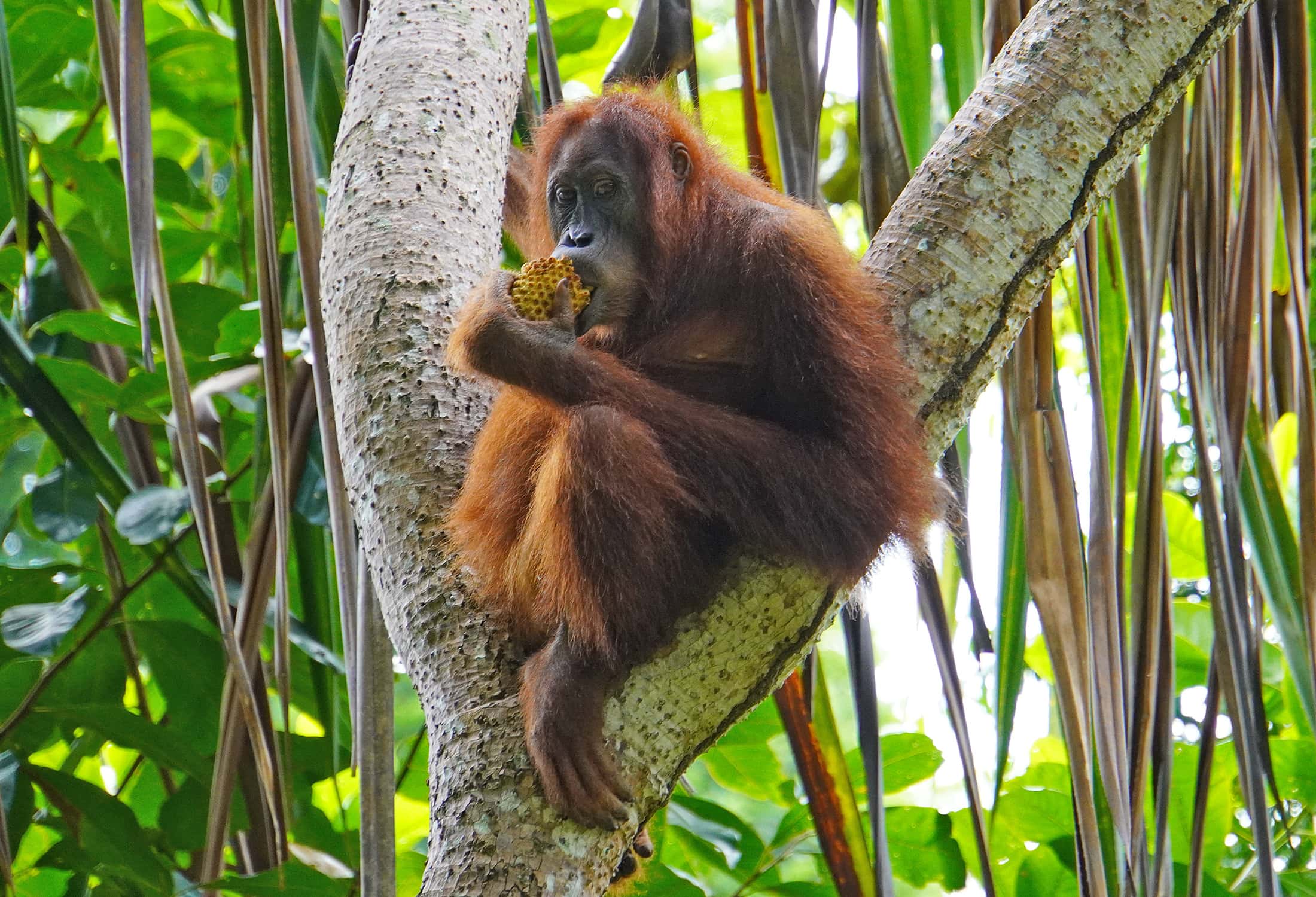
This orangutan, who may have used a tool to fish a honeycomb out of a tree hole, is quietly savouring his reward.
“I felt the monkeys’ curiosity about people and yet their calm relaxation in harmony with the trees. The playfulness of the younger orangutans, swinging nimbly after their mothers through the treetops in a beautiful flow. It was an awe-inspiring feeling to be able to observe and experience this… I also saw the little ones high up in their nests, which they learn to build by watching and practising.”

At lunchtime, we eat fruit and rice that we had brought with us. Our trekking trip is completely ecological and sustainable. The plates, for example, are made of banana leaves reinforced with paper. However, the meager ration is more likely to make us lose weight.
The rainforest national park is a delicate and highly-diverse ecosystem. It is threatened by deforestation, mainly for new palm oil and rubber plantations, and by often illegal slash-and-burn practices. Many of the wild animals are in danger. In recent decades, an estimated 50% of Sumatra’s rainforest has been lost.
Satyodaya comments, “In my opinion, the rainforest in Gunung Leuser National Park is surviving only because of its steep and hilly terrain which is not suitable for cultivation.”
Ride back home
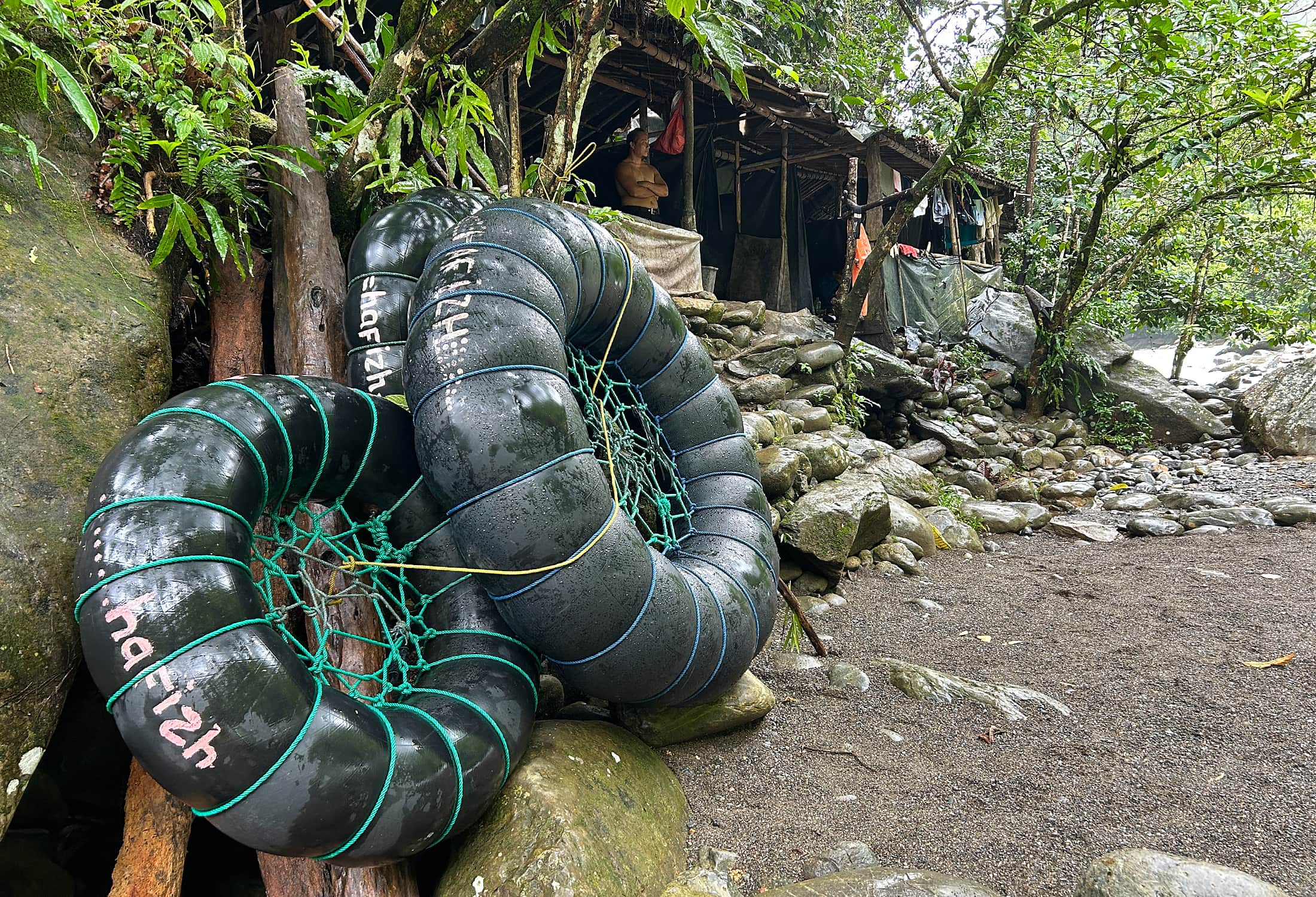
How are we supposed to manage the many kilometres back down the river on these inflated inner tubes?
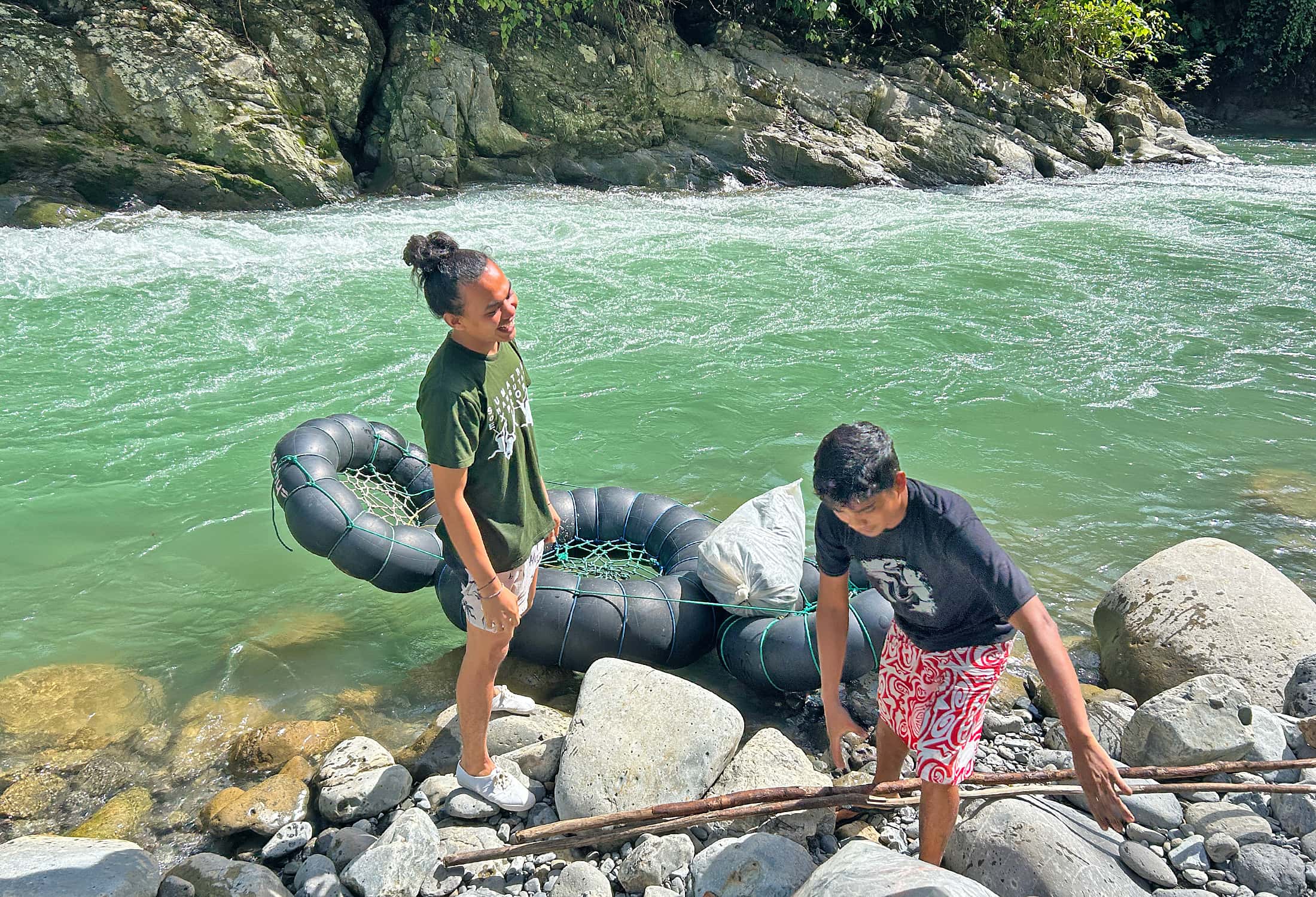
Now the fun part of the trek begins for our crew.
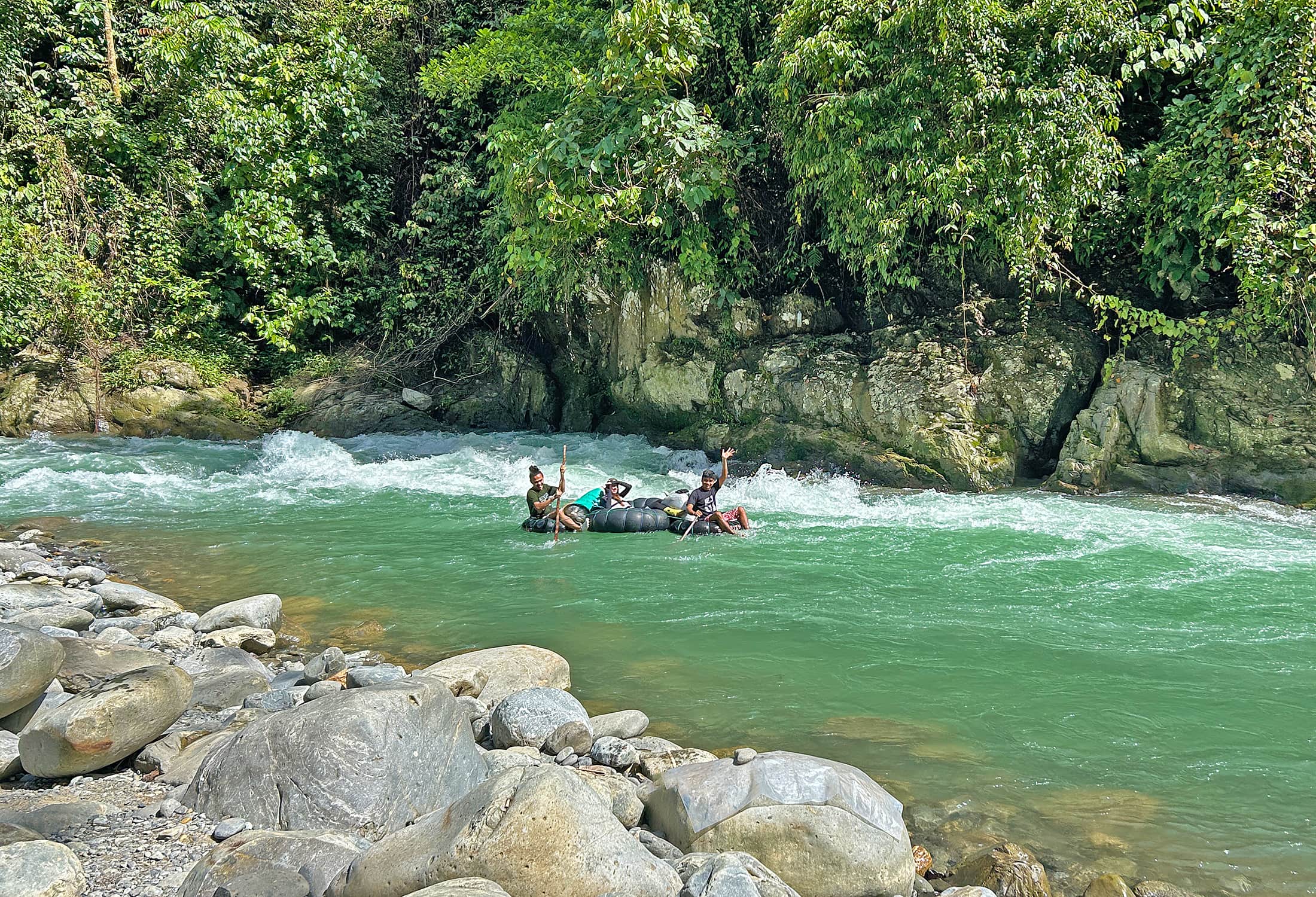
‘Bye bye, see you soon!’ Or so we hope…
This is how Satyodaya described to me the white-water rafting experience: “For the return trip at noon on the third day, we used those homemade inflated boats. They are made of old lorry inner tubes tied together with ropes. In the middle of the tube there is simply a rope mesh where you sit in. The rowers sit in the smaller front and rear tubes, and the two passengers sit, more or less ‘passively’, in the middle one.”

“It’s a hell of a ride – up and down. We often miss the rocks just by an inch!”
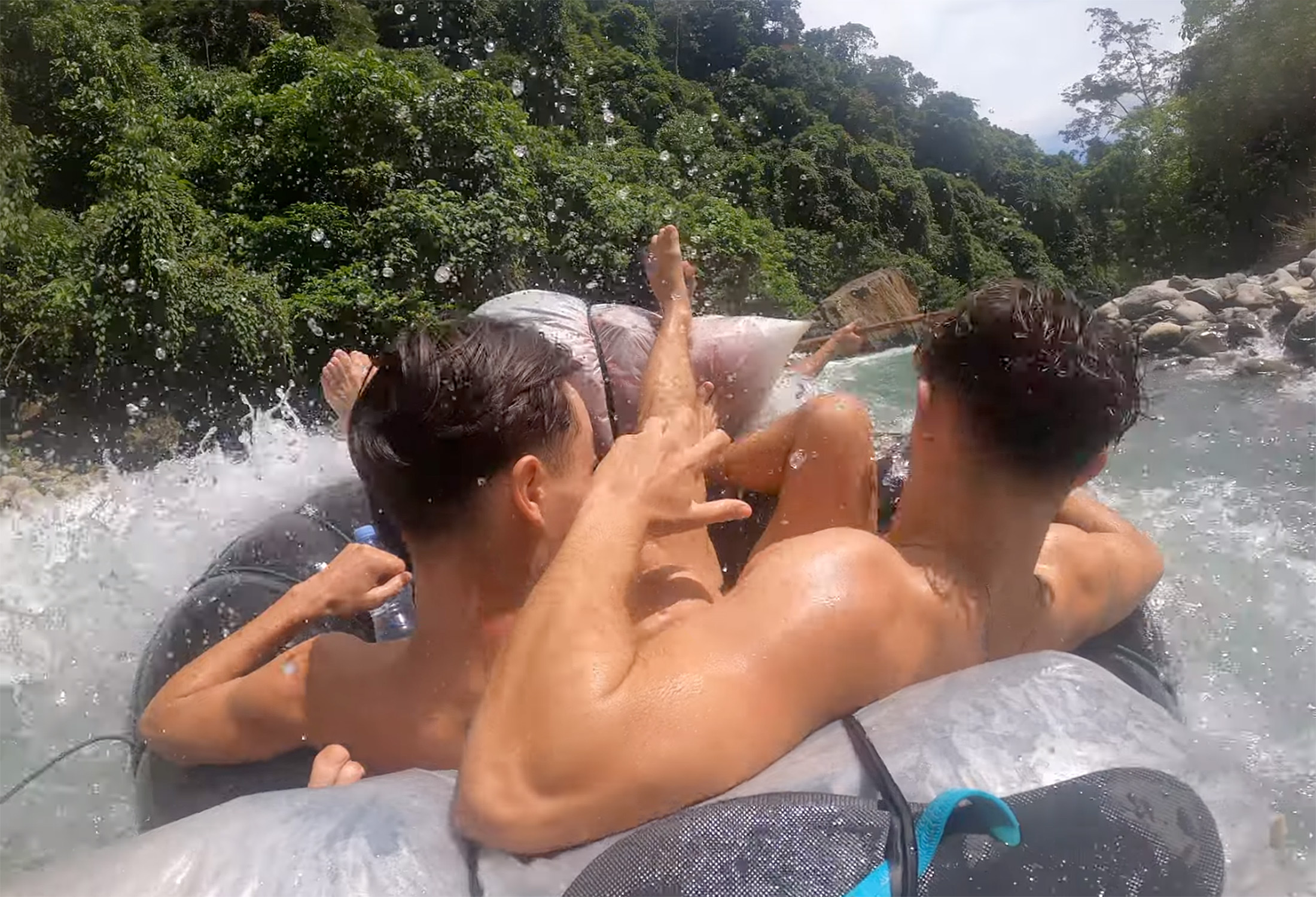
“I don’t know exactly how long the ride lasted – maybe half an hour to an hour. On the raft, I completely lost track of time.”
Trip to Lake Toba
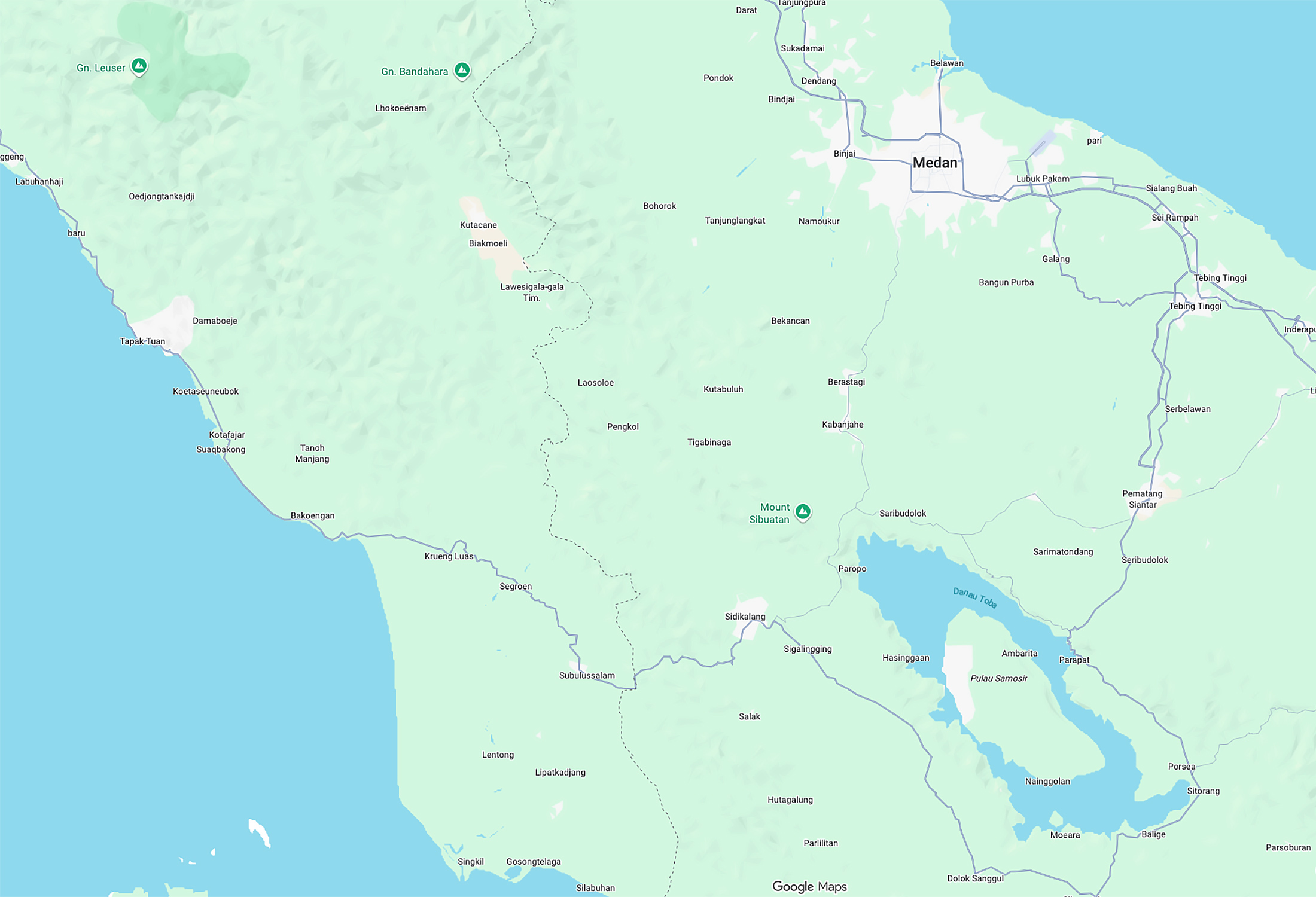
After a day’s rest in Bukit Lawang, Satyodaya continues south by bus to Lake Toba, about 80 km away.
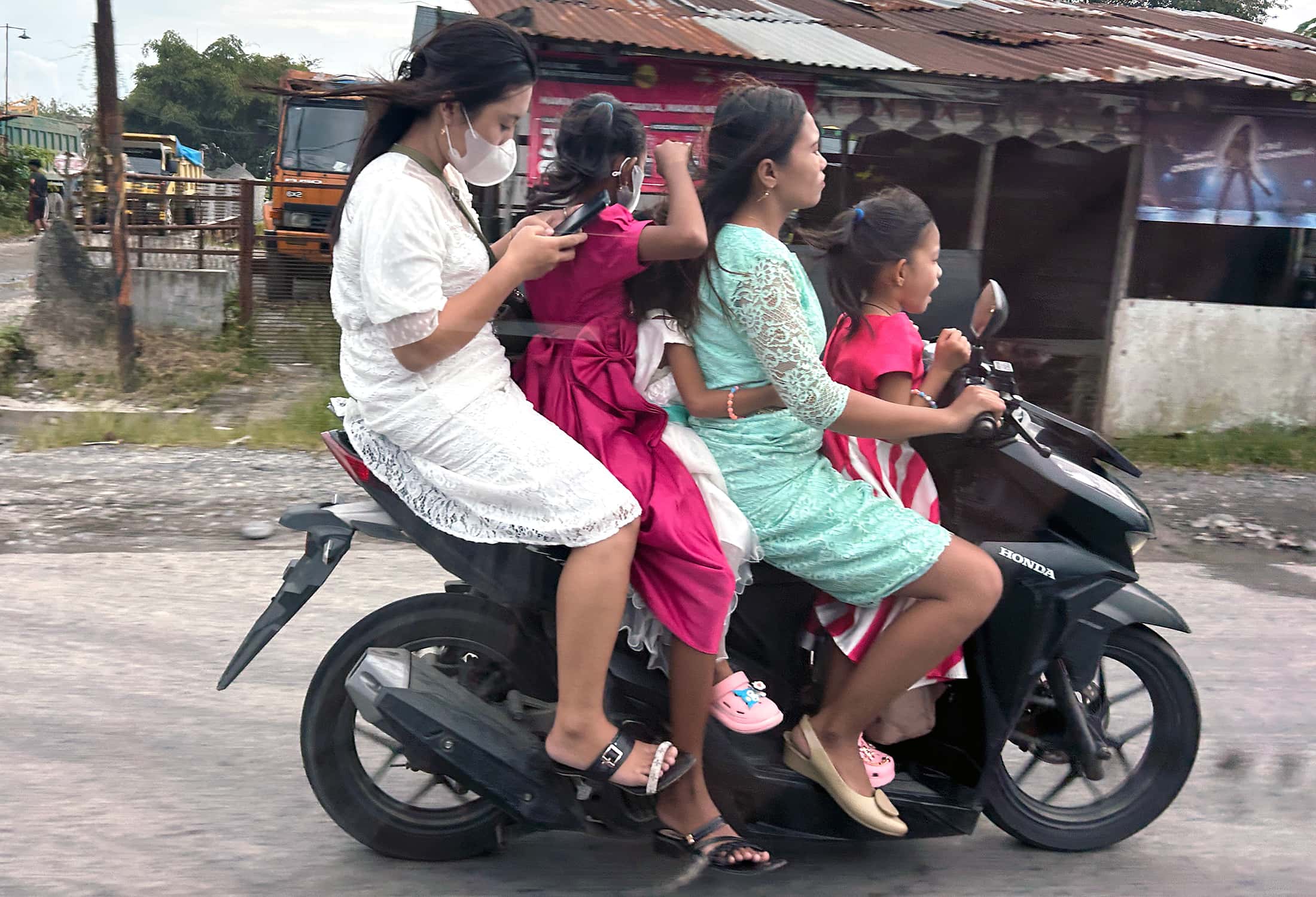
A brief day trip offered a welcome chance to relax – finally just watching the world from a bus window. The scooter here served as a family rickshaw.
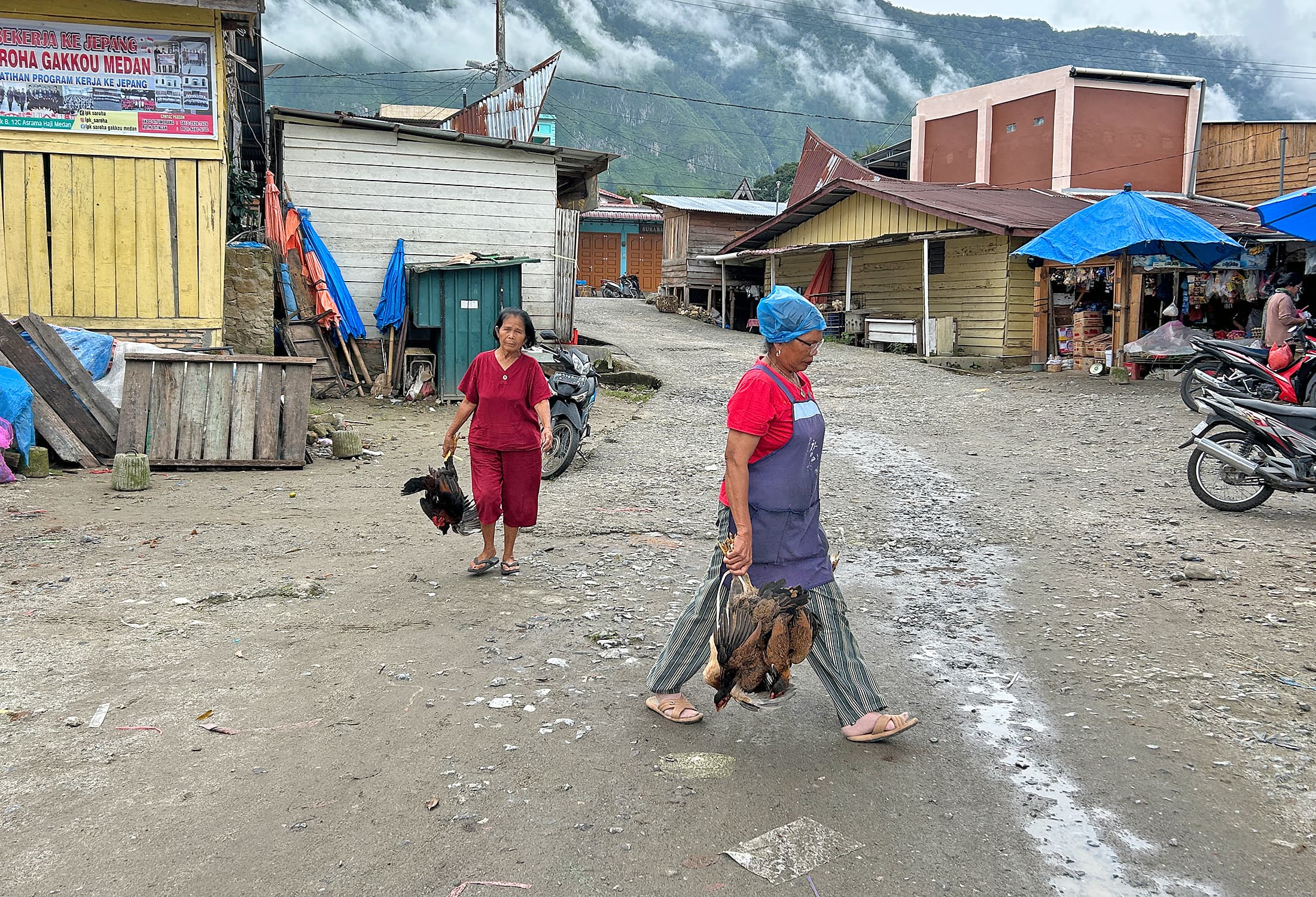
Village life: much of the local population relies on agriculture.

Streets often double as marketplaces for fruit and vegetables.

Will this young islander, already digitally connected to the wider world, one day protect the precious treasures of her rainforest?

This crater lake, 87 km long and 36 km wide, is roughly the size of Ibiza and is the largest crater lake in the world.
Lake Toba, about 900 metres above sea level, tells a dramatic chapter of Earth’s history. Around 75,000 years ago, the Earth’s crust bulged due to a growing magma bubble. One day, an underground supervolcano erupted, leaving a vast crater that eventually filled with water. (link Wiki 2) Volcanologists believe this may have been the largest volcanic eruption in the past two million years.
The ejected volcanic ash would have risen up to 80 km, as traces have been found throughout Asia. And as it spread through the atmosphere, the sun’s rays were blocked out, possibly leading to global cooling, crop failures and famine. Many species were wiped out, including the young homo sapiens species which had settled here. This might have delayed the spread of the human race in Asia.
As we compile this article, a volcano south of Bali, the Lewotobi Laki-Laki, is erupting. Its ash cloud is spewing 18 km into the atmosphere. This is an example of the extreme volcanic activity that is still ongoing in the Indonesian archipelago.

Lake Toba has a large island in the middle. Selfie taken on the ferry during the crossing to Samosir Island.
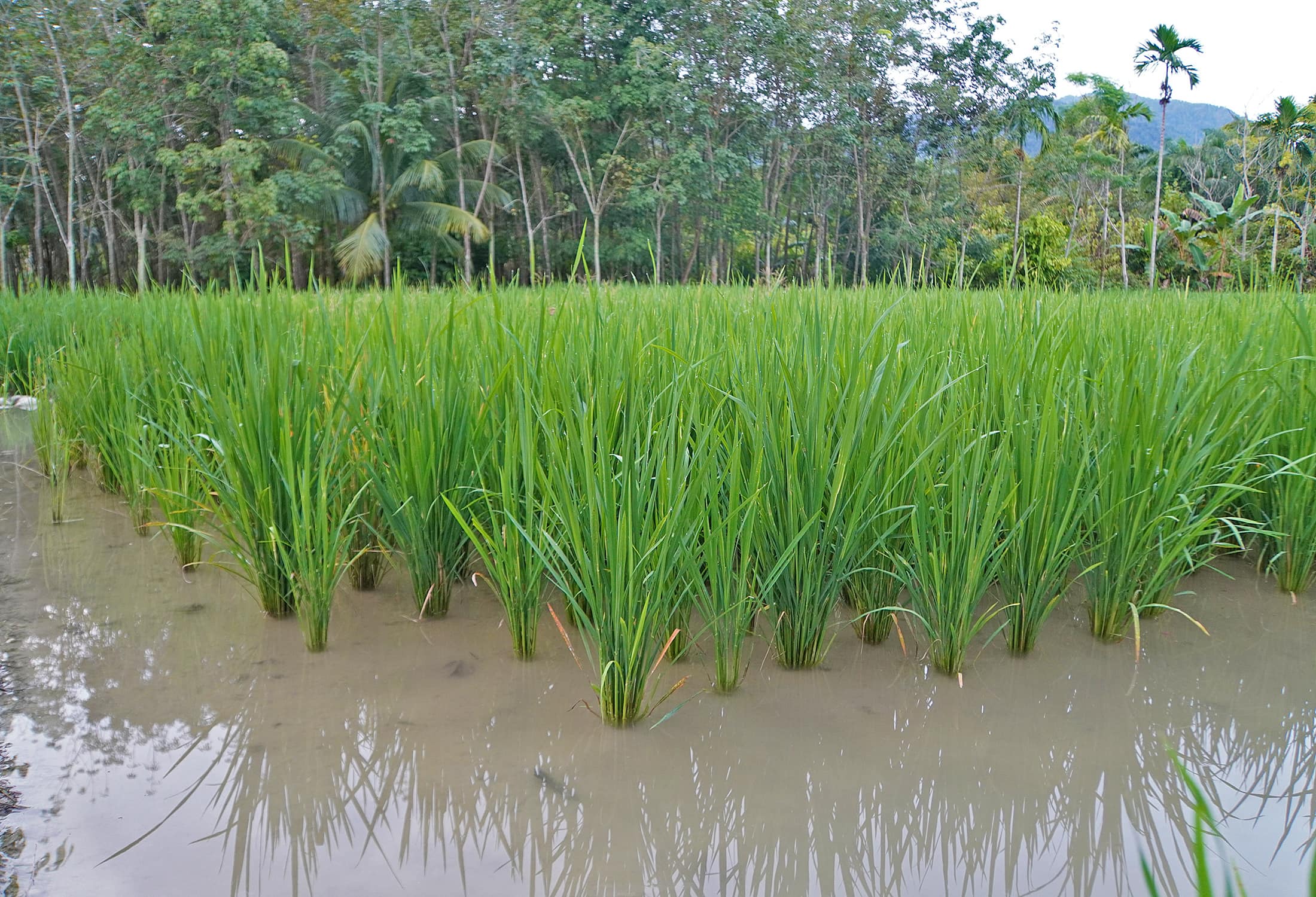
Mineral-rich soil and high rainfall support abundant rice cultivation.
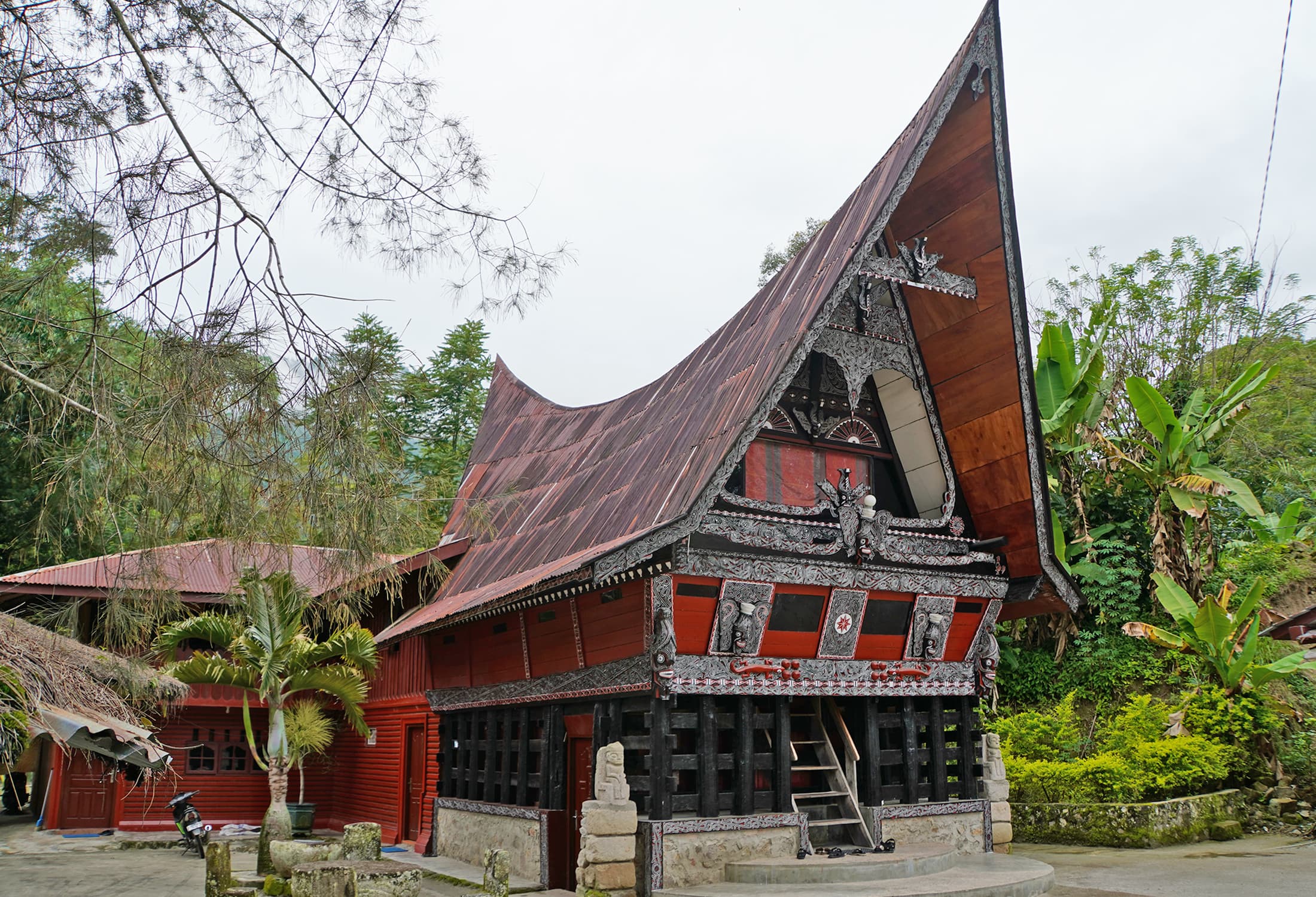
Historic Toba stilt house in an open-air museum.
The inhabitants around Lake Toba are mostly Christians, known as Toba Batak. Their traditional and artistic stilt houses are built with a curved roof, which is supported by a timber frame. The upper level stores supplies, while the family lives below. The space below, created by the support stilts, provide protection against the periodic flooding.
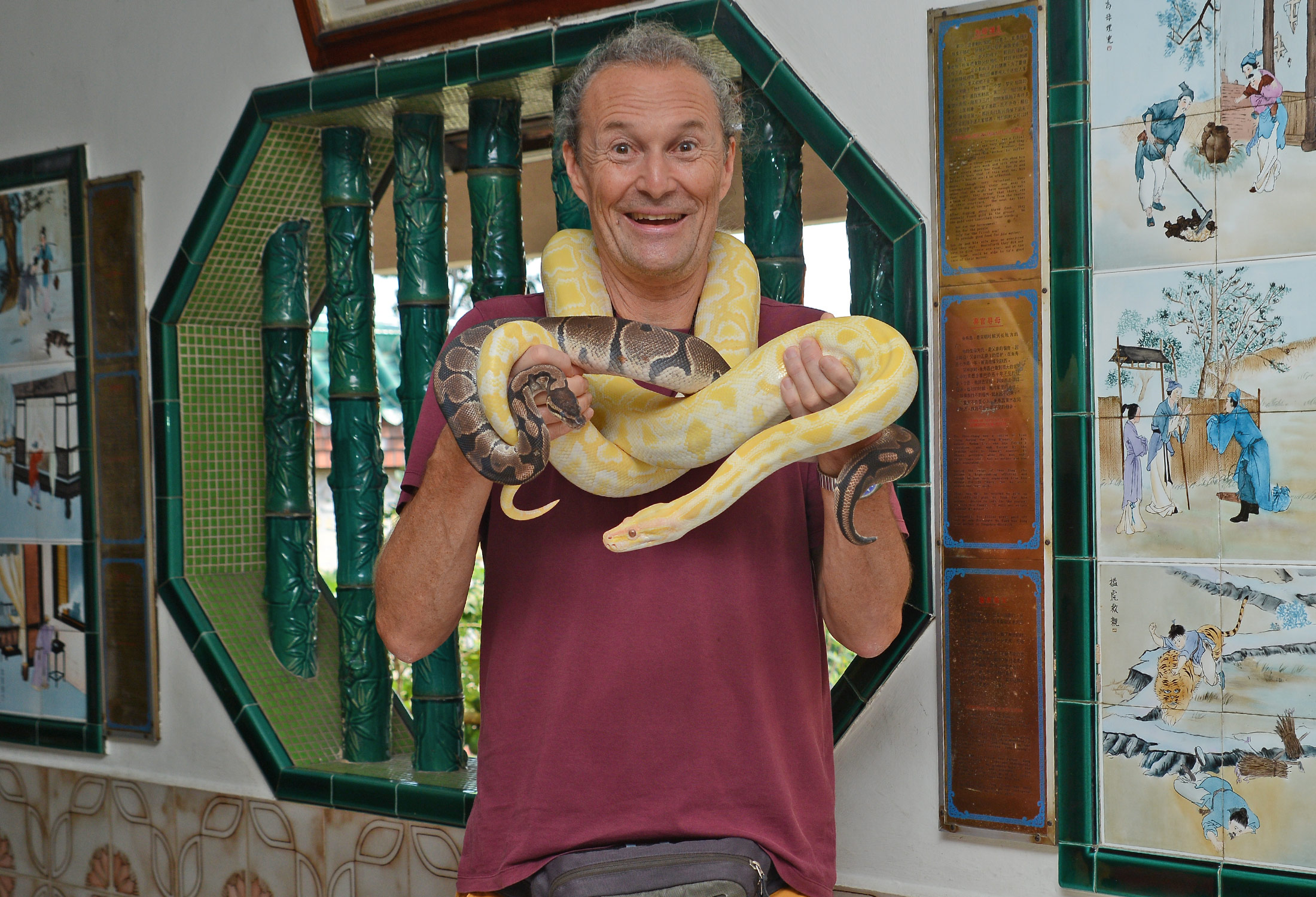
At the snake temple in Penang, Malaysia.
At the end of his story, Satyodaya described to me another highlight of his subsequent itinerary along the west coast of Malaysia to the Thai border.
“This rare temple is financed by donations and by taking photos of tourists holding snakes. After a brief moment of hesitation, I decided to try this unique experience and let a python be wrapped around my neck. To my great surprise, which was written all over my face, I was given a second giant snake to hold!”
Back in wintry, snow-covered Bavaria, it was time for Satyodaya to share with me, and the rest of us, these unique photos from his recent adventure.
Travel enthusiasts can find photos of his more than 30 safaris on his website: mediendesign-hoerl.de
Related articles on Osho News
- Jungle trekking in Sumatra – Part 1 of Satyodaya’s journey
Related links
- Gunung Leuser National Park: wikipedia.org
- Lake Topa: wikipedia.org
- Youngest Toba eruption: wikipedia.org





Comments are closed.